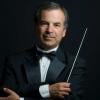
After 22 years as music director of the Marin Symphony, Alasdair Neale is stepping down from the podium, leaving the Bay Area, where he has lived for 35 years, and moving to Paris. As I chatted with the esteemed conductor recently over lunch, it was crystal clear that he was juggling a million moving parts. Along with some concerts with the New Haven Symphony Orchestra, where he will also be winding up his five-year tenure as music director this season, and a trip to Paris with Lowell Tong, his husband of many years (who recently retired from his position as executive vice chair of the department of psychiatry and behavioral sciences at UCSF), to find an apartment, Neale will be returning to rehearse his last concerts with the Marin Symphony on April 22 and 23. And he was taking it all in stride.
“We’re very excited, there’s no question,” said Neale. “But of course, in leaving Marin, there are very mixed feelings because of the wonderful 22 years that I spent with the organization and the friendships that I’ve had at so many levels. I won’t forget those.”
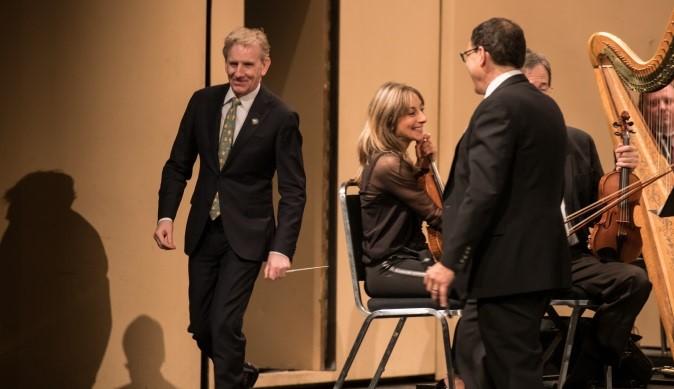
The decision evolved from a plethora of events and circumstances, including Tong’s retirement from UCSF and Neale’s desire to be closer to his family, including his mother, who is 88 and lives in Edinburgh, and his brother, who lives just outside of London. Neale and Tong have been visiting Paris for years and have made many friends there, and the conductor says he’s always been fascinated by the city. His plans are currently fluid, but he will continue as the music director of the Sun Valley Music Festival in Idaho, where he has been conducting the orchestra every summer for the past 29 years.
“The uncertainty is part of what’s appealing,” said Neale. “It’s all part of the adventure. I will now have a great deal more time to explore in greater breadth and depth the music that I conduct in Sun Valley in the summer. There’s a huge amount of repertoire in an insanely short amount of time, and I get done what I need to get done, but there’s always more. I’ll be able to do this at my own pace and mix it in with all sorts of new influences and some travel. It has, along with Marin, been the real constant in my life, and I love it there. I am very fortunate to have this dream situation.”

Born in the U.K. and raised in Edinburgh from the age of 10, Neale came from a musical household. His mother was a music teacher, and both parents sang in amateur choirs. He took up flute at the age of 9 and cello at 11 and also became interested in conducting. Then, after joining the Caritas String Orchestra at 13 on the flute (where a young Donald Runnicles was then conducting), with no formal training yet, he began assisting with conducting.
“I’d always been interested in getting under the metaphorical hood of the orchestral car. That motivation came from within,” Neale explained. “And when I was 14, they asked me one day to [lead] a woodwind sectional for Carl Nielsen’s First Symphony. So I did, and I was so intimidated. Everybody was older than me, I didn’t feel confident, and I didn’t think I did well at all. But somebody must have seen something because they asked me then to do a string sectional, and then a couple of years down the road, I was the assistant conductor for a year, and then when I was 16, they asked me to conduct the orchestra.”
While Neale was earning a bachelor’s degree at Cambridge University and still unsure about his future, a cellist friend convinced him to audition for a master’s program in conducting at Yale with the esteemed German conductor Otto-Werner Mueller, and that’s what brought him to the U.S.
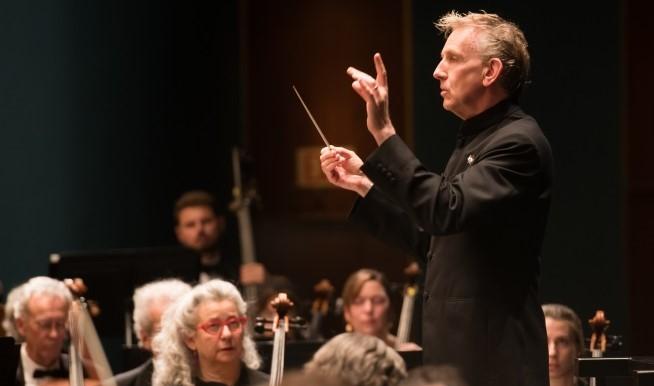
“My teacher was a legendary disciplinarian, but he gave me a great many things, including a grounding and a really solid technique of gestures, which I simply know, from years and years of players telling me, makes a difference,” said Neale. “Clarity in musical gestures, as in speech, gets your ideas across better, and it takes the guesswork out for the musicians. It makes their job easier and makes them play better. So I credit my teacher with teaching me a really good, clear technique.”
Neale moved to San Francisco in 1989 after he was offered the position of assistant conductor with the SF Symphony and music director of the SF Symphony Youth Orchestra. He acknowledges a massive debt of gratitude to Herbert Blomstedt for hiring him. He left the SF Symphony in July 2001 and started at the Marin Symphony just two months later.
Over 22 years, Neale mentioned, “the orchestra has grown tremendously and has given me the space and support to become a better conductor, and we’ve hired some tremendous new players over the course of the years, so I have always been artistically fulfilled. There can be so many fault lines running through an orchestra, onstage and offstage — clashes of personality, differences of vision, differences of style. I am particularly happy that I feel my relationship with the orchestra is as strong as it’s ever been — actually stronger — and that’s not something you can take for granted after 22 years.”
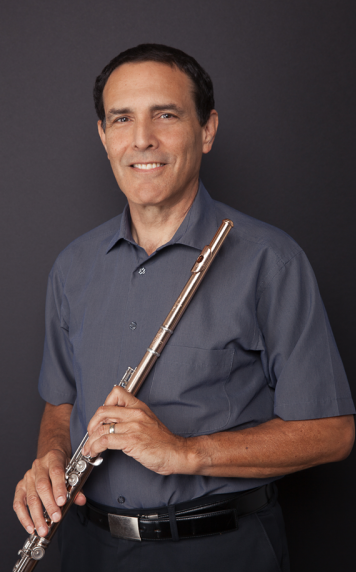
Tod Brody, executive director of the Marin Symphony, who also subbed with the orchestra on flute for several years, concurred.
“Typically, when a conductor comes into a situation, they have what we call a ‘honeymoon period.’ Everyone’s excited, and generally speaking, that starts to fade out somewhere between five and 10 years. But with Alasdair, that has never happened,” said Brody. “Every musician that plays with him feels like they can do their best work when Alasdair is on the podium and just wish that he would stay forever. He is really good at what he does and is a great communicator, honest and real, skilled at using time well, and also just a stellar human being.”
Marin Symphony Board President Steve Machtinger, who has played viola with the orchestra for 41 years, expressed similar sentiments. “A lot of the musicians in the orchestra are members of what we call the ‘freeway philharmonic.’ They play in many orchestras, and they have many choices about which orchestra gig they are going to take, and increasingly, they want to play with the Marin Symphony, and that’s because of Alasdair. He is just a pleasure to work with as a musician and has been instrumental in connecting us with the people who are so important to our organization.”
Brody reports that the Marin Symphony has completed a yearlong search process for a new music director and that the four finalist candidates will be invited to work with the orchestra and the community for a week before the final decision is made. Originally, that was going to occur in the 2023–2024 season, but since the orchestra’s venue, the Marin Veterans’ Memorial Auditorium, will be closed all of next season due to seismic retrofitting, the finalists’ appearances have been postponed until 2024–2025. Next season will consist of a series of chamber-sized concerts in a variety of local venues.
“Alasdair is irreplaceable,” said Brody. “So I remind people that we’re looking for Alasdair’s successor, not for his replacement, and very likely the successor will be someone very different from Alasdair.”
Part of Neale’s legacy is that, along with the standard classical repertoire, he has showcased the work of contemporary composers in programs both with the Marin Symphony and at Sun Valley. One of those composers is Bay Area DJ, curator, and Grammy Award winner Mason Bates, who infuses electronica into many of his compositions.
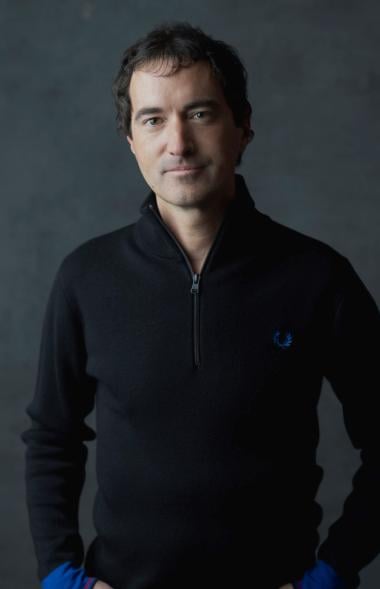
“Alasdair’s always curious about what is new, and he does an incredible job of balancing very innovative new programming with the historical needs of symphonic concerts,” said Bates. “He is able to bring a very standard piece of rep to life in a surprising and unexpected way. He’s also able to conduct a brand-new piece in a way that makes you think it’s been around for a lifetime,” Bates added. “And I love that he’s so aware of how audiences can go on musical journeys while also being grounded in the standard rep.”
Bates believes that Neale and the Marin Symphony have had a strong impact on the Bay Area music scene in general.
“We have an amazing flagship, the San Francisco Symphony, but no single orchestra can bring all the different kinds of music into a music scene,” said Bates. “It’s important for any community to have a symphony because symphonies not only provide incredible concerts, but they impact the community in such positive ways, and the Marin Symphony absolutely fills the important role of providing something that’s tailored to Marin audiences.”
A recent Marin Symphony concert featured the dynamic, genre-bending string trio Time for Three and included Contact by Pulitzer Prize- and Grammy Award-winning composer Kevin Puts. The piece came about because Neale had the idea of introducing Puts to Time for Three several years ago, and it won the 2023 Grammy for Best Contemporary Classical Composition, while Time for Three won for Best Classical Instrumental Solo.
“I feel like the collaboration process and the kind of synergy that Time for Three and I have is what led to Contact being written,” said Puts. “So his [Neale’s] instincts to put us together and have us create something is what led to the Grammy, and it’s been one of the most fortunate pairings and one of the most fruitful collaborations in my life,” Puts added. “And when we finally did bring the piece to Sun Valley, it felt like finally everything came together. That was the final piece of the puzzle — that he was the one conducting it.”
When Neale learned about the two Grammy wins, “I did a little dance up and down and stamped my feet in my apartment because I was so absolutely thrilled,” he recalled.
Puts said that working with Neale, who has showcased other pieces of his over the years, has been very satisfying.
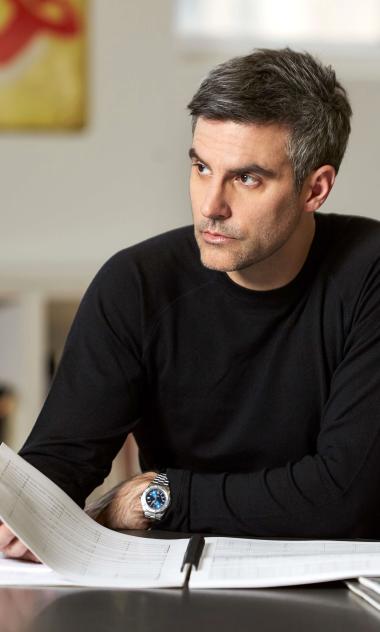
“It’s a pleasure every time we work together because he’s just such a great collaborator. He respects and understands my voice as a composer, and he’s just so open and willing to try new things, even at the last minute,” Puts said. “He understands lyricism, how to shape a phrase, and how to inspire the orchestra to put the shape to a melody, and for me, that’s the ideal expressive force that I need on the podium.”
Grammy Award-winning choral conductor Kevin Fox, who joined the Marin Symphony in 2016, said working and collaborating with Neale has been a great experience.
“I really appreciate his high standards, his musicianship, and his professionalism, and I find him incredibly easy to work with,” said Fox. “He is always very gracious, and he has a rare combination of leadership [and] musical and collaborative skills, and I have really enjoyed being able to work with somebody with that combination. He has also always been really supportive of the chorus, and they really appreciate his understanding of choral singing.”
When I asked Neale what he liked most about conducting, he explained that “the ultimate satisfaction is knowing that you are in the middle of the greatest medium of live sound that exists. There is nothing like a symphony orchestra, and I would also add a chorus to that, but the classical repertoire onstage and live is by far the greatest form of musical expression that I have ever come across. So the privilege and responsibility of helping shape those sounds and transmitting them to an audience is something that I take very seriously, and it also brings me a huge amount of happiness.”
I also asked Neale what the most challenging part of being a conductor was, and he explained that it was listening:
You can only really understand what it’s like to be a conductor when you’re on the podium and doing it. There’s a fire hose of sound that comes at you, all at the same time, all of which you have to process and make sense of, so you are simultaneously leading and reacting to the sound. It’s not just a question of whether they’re together or not; it’s also a question of whether the right notes are being played and, if not, where the wrong note exists. It can be like a needle in a haystack. It’s also a question of are the balances working — are certain elements too loud or too soft, and if so, why? And it’s also a question of the quality of the sound. What kind of articulation do you want? What kind of attack do you want? What kind of vibrato do you want? So processing the sound as it’s coming at you at 100 miles an hour all the time — that’s the biggest challenge.”
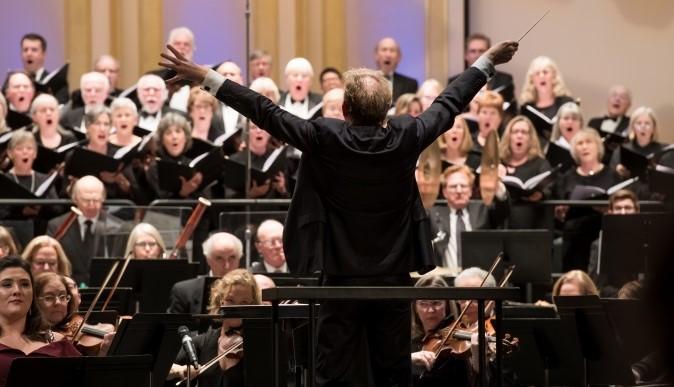
“Masterworks 4: Mozart and Mahler,” the final program Neale will conduct with the Marin Symphony on Saturday, April 22 at 7:30 p.m. and Sunday, April 23 at 3:00 p.m., includes John Adams’s Short Ride in a Fast Machine; Mozart’s Violin Concerto No. 5 in A Major, with former Marin Symphony concertmaster Jeremy Constant as the soloist; and Gustav Mahler’s Symphony No. 1.
“The very first concert I conducted as music director with the Marin Symphony started with a piece by John Adams, so I thought, ‘Let’s go full circle with that,’” Neale explained. “And Jeremy, of course, has been my right-hand man for all of my time up until his departure, and I just thought it would have an emotional resonance to bring him back as a soloist on my last program. And then, Mahler is Mahler. [The First Symphony is] a big emotional journey for everybody, and I just thought it would be the perfect thing to round out my time in Marin. I’ve done it there before, but it just seemed to fit the bill in every sort of way. It has one of the great endings in the repertoire, and it’s the right piece to go out on.”




